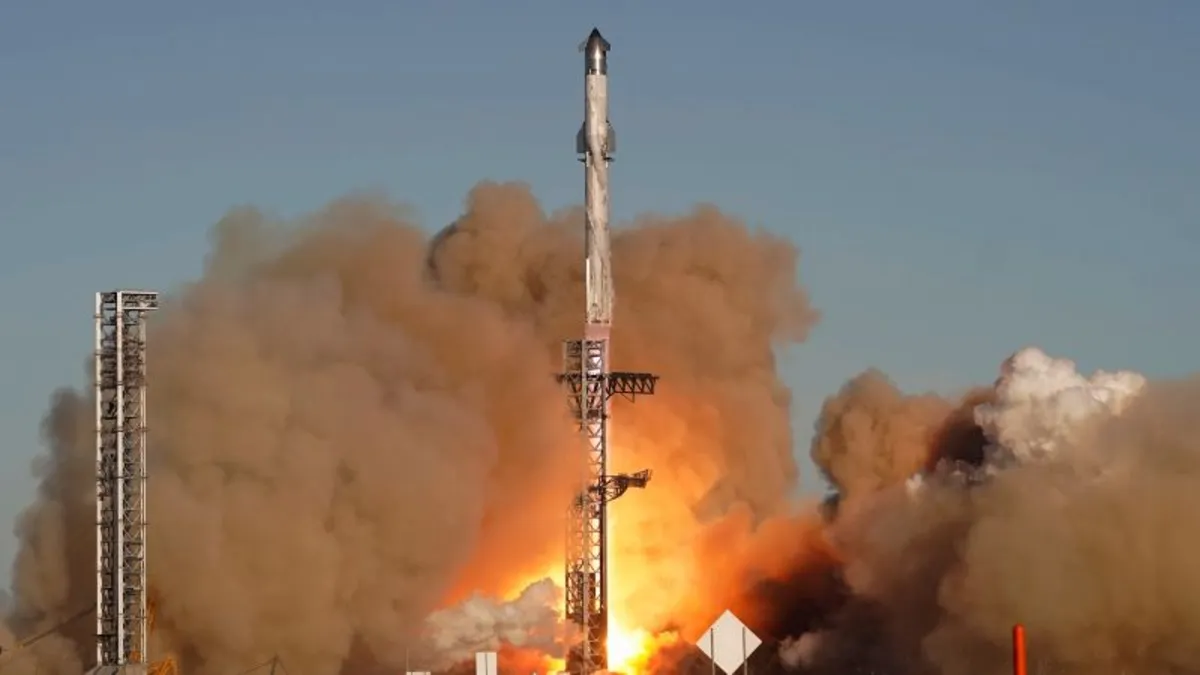
Federal regulators have given the green light for SpaceX to proceed with another test flight of its Starship spacecraft, following a dramatic explosion during a previous test in January. The Federal Aviation Administration (FAA), which oversees the licensing of commercial rocket launches, announced on Friday that it has modified SpaceX's license to permit the upcoming eighth test flight of the Starship system, commonly known as Flight 8. This decision comes while investigations into the January mishap are still ongoing.
In an official statement, the FAA confirmed, “The FAA issued a license modification authorizing the SpaceX Starship Flight 8 launch.” The agency concluded that SpaceX had successfully met all necessary safety, environmental, and licensing requirements for the upcoming suborbital test flight. The FAA's approval marks a significant step in SpaceX's ongoing efforts to refine and test its revolutionary launch system.
SpaceX CEO Elon Musk has been proactive in promoting Flight 8 through social media channels. Initially, the company targeted a launch date for Friday, but this has since been rescheduled to Monday. Liftoff is anticipated to occur from SpaceX's facilities located in South Texas that afternoon.
The incident that occurred in January involved the 171-foot (52-meter) Starship separating from its Super Heavy rocket booster during ascent. The explosion transpired over the North Atlantic, resulting in debris that caused flight disruptions. Notably, a piece of debris struck a vehicle on the island of South Caicos, as reported by the FAA. Fortunately, no injuries or significant property damage were reported, although locals in the Turks and Caicos Islands noted the presence of debris scattered across beaches and roadways.
In late January, officials from the Turks and Caicos Islands met with SpaceX representatives to formulate a recovery plan for the debris. This plan received approval from local government authorities on February 13, although specific details about the recovery were not disclosed. Attempts to reach out to SpaceX or the Turks and Caicos National Security Secretariat for comments were unsuccessful.
Alizee Zimmermann, the executive director of the Turks and Caicos Reef Fund, indicated that residents were still discovering remnants of the spacecraft more than a month after the explosion. “A lot of (the debris) has broken down or is now buried in the sargassum and seaweed that rolls in,” Zimmerman communicated via text to CNN. SpaceX has made efforts to reassure residents that the debris will not pose a threat to the local ecosystem. A document provided by SpaceX highlighted that the hexagon-shaped heat shield tiles found among the debris are made of “high-grade silica,” which is characterized as “highly resistant to degradation” and poses “no toxic risks.”
To further illustrate the safety of these materials, SpaceX shared an image of food served on a plate made from the same thermal tiles, captioned: “Starbase restaurant serves food on the thermal tiles.” This humorous approach emphasizes the safety and utility of the materials used in the Starship system.
SpaceX provided insights into the causes behind the Flight 7 explosion, suggesting that a leak in the aft section of the Starship, near a tank containing super-chilled liquid oxygen (LOX), was likely responsible. This leak may have led to a pressure increase, resulting in a fire. The company suspects that vibrations from the flight's sonic conditions contributed to this issue. Furthermore, SpaceX lost contact with the Starship just before it disintegrated, though post-flight analyses indicated that built-in safety systems were activated automatically to mitigate damage.
In preparation for Flight 8, SpaceX has conducted ground tests to replicate the conditions that led to the previous explosion. The mission teams have made crucial adjustments, including modifying fuel lines, tweaking propellant temperatures, and refining the vehicle’s operating thrust target. Additionally, the Starship is now equipped with new venting systems and a purge mechanism utilizing nitrogen to minimize fuel leaks and reduce flammability in the aft region.
The upcoming Flight 8 mission presents SpaceX with a renewed opportunity to achieve objectives that were sidelined when the Starship exploded approximately 10 minutes into Flight 7, which was meant to last an hour. Among these goals is the deployment of mock satellites during the mission, a critical test that SpaceX is eager to accomplish.